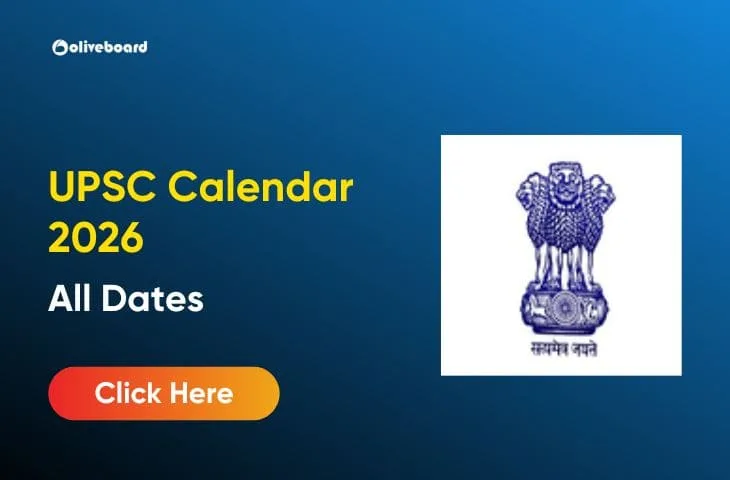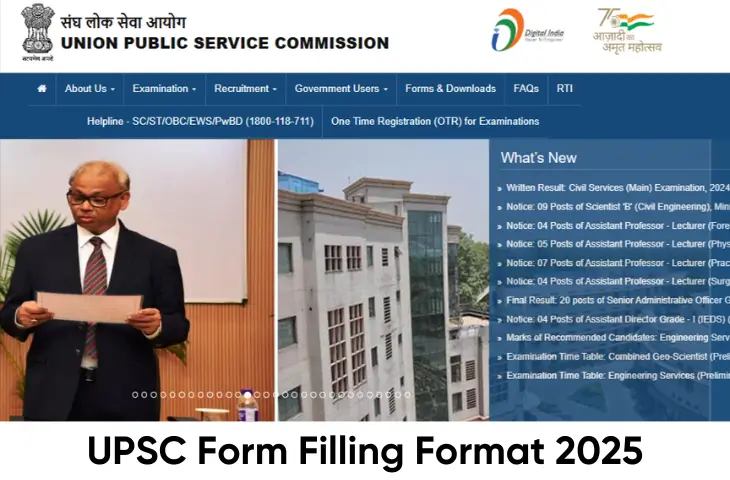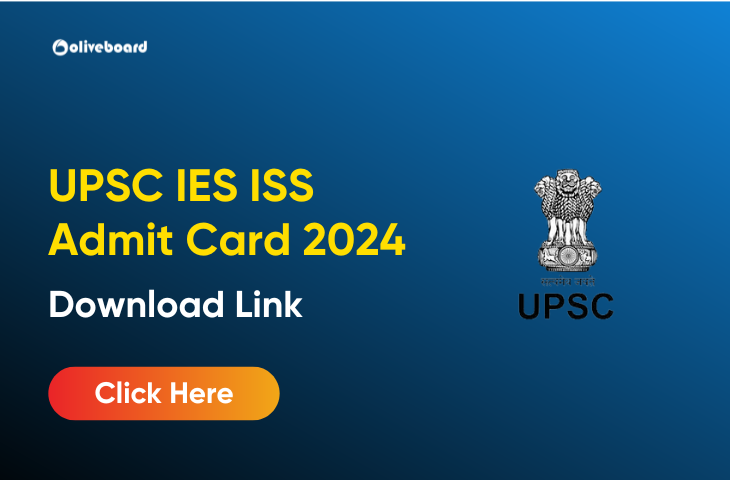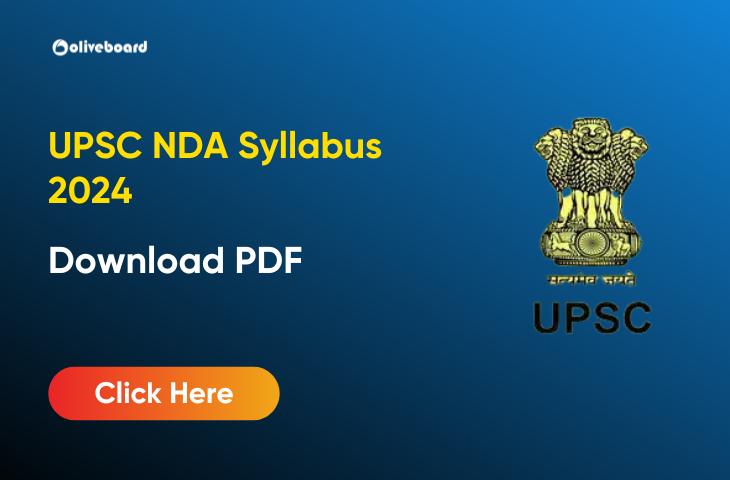UPSC NDA Syllabus 2024
UPSC NDA Syllabus 2024: The UPSC NDA Syllabus 2024 will be made available by the Union Public Service Commission (UPSC) on its official website alongside the notification. National Defence Academy (NDA) exam is conducted twice a year to select qualified candidates for the country’s defense forces. There are two papers in the NDA exam – Mathematics and General Ability Test (GAT).
UPSC NDA Syllabus
The NDA written exam has two parts: Mathematics and General Ability Test (GAT). The GAT section checks knowledge in history, general knowledge, current events, English, science, and geography. On the other hand, the Mathematics section has questions at the 10+2 level. In the UPSC NDA syllabus, the GAT paper is worth 600 points, while the Mathematics section is worth 300 points. If candidates score above the cut-off marks in the written exam, they get a chance for an SSB interview.
To prepare well, it’s essential to understand the detailed syllabus, which is available for download in an official UPSC NDA syllabus PDF covering both Mathematics and GAT topics.
UPSC NDA Syllabus 2024 – Overview
NDA is a Defense entrance exam conducted to recruit eligible personnel to the Indian Army, Navy and Air Force Wing of the National Defense Academy and Indian Naval Academy Course -INAC. UPSC sets the NDA syllabus. The exam is conducted twice a year for NDA 1 & NDA 2.
A short overview of the UPSC NDA exam is as follows:
| Particulars | Details |
| Name of the Exam | National Defence Academy (NDA) |
| Exam Conducting Body | Union Public Service Commission (UPSC) |
| Frequency of NDA Exam | Twice a year (NDA 1 & NDA 2) |
| Mode of exam | Offline |
| Total Papers in NDA Exam | Mathematics General Ability Test (GAT) |
| Total Marks for NDA Exam | Mathematics: 300 Marks GAT: 600 Marks Total: 900 Marks |
| Total No. of Questions | Mathematics: 120 GAT: 150 |
| Negative Marking | Mathematics: -0.83 GAT: -1.33 |
| Exam Duration | Mathematics: 2 Hrs. 30 Mins. GAT: 2 Hrs. 30 Mins. |
UPSC NDA Syllabus and Exam Pattern
The NDA selection process consists of two main stages: the Written Examination and the SSB Interview.
The NDA written exam is divided into two parts:
- Mathematics
- General Ability Test (GAT)
General Ability Test (GAT) is sub-divided into two parts:
- English Test
- General Awareness or General Knowledge Test
Aspiring candidates for the upcoming exam should thoroughly go through the latest NDA syllabus 2024, which comprises the detailed syllabus of the Mathematics, English, and General Knowledge.
NDA Exam Pattern 2024
The Written Exam comprises two subjects: Mathematics and General Ability Test.
- Mathematics paper assesses candidates on 10+2 level mathematical concepts and carries a weightage of 300 marks.
- GAT evaluates candidates’ knowledge in history, general knowledge, current affairs, English, science, and geography and is worth 600 marks.
| Paper | Subject | Maximum Marks | Duration | Marking per Question | Negative Marking |
| Paper 1 | Mathematics | 300 | 150 minutes | 2.5 | 1/3rd of marks allotted for the question |
| Paper 2 | General Ability Test | 600 | 150 minutes | 4 | 1/3rd of marks allotted for the question |
UPSC NDA Syllabus: Mathematics
Mathematics syllabus for NDA Written Paper consists of topics such as Algebra, Matrices & Determinants, Trigonometry, Analytical Geometry of 2D & 3D, Differential Calculus, Integral Calculus & Differential Equations, Vector Algebra, Statistics & Probability.
Breakdown of Mathematics Syllabus for NDA Exam:
| Chapters | Topics |
| Algebra | -Concept of set, operations on sets, Venn diagrams. -De Morgan laws, Cartesian product, relation, equivalence relation. -Representation of real numbers on a line. -Complex numbers—basic properties, modulus, argument, cube roots of unity. -Binary system of numbers. -Conversion of a number in a decimal system to a binary system and vice-versa. -Arithmetic, geometric and harmonic progressions. -Quadratic equations with real coefficients. -The solution of linear inequations of two variables by graphs. -Permutation and combination. -Binomial theorem and its applications. -Logarithms and their applications. |
| Matrices & Determinants | -Types of matrices -Operations on matrices -Determinant of a matrix -Basic properties of determinants -Adjoint and inverse of a square matrix -Applications of matrices i. Solution of a system of linear equations in two or three unknowns using Cramer’s rule ii. Solution of a system of linear equations in two or three unknowns using Matrix Method |
| Trigonometry | -Angles and their measures in degrees and radians. -Trigonometric ratios. -Trigonometric identities including sum and difference formulae. -Multiple and sub-multiple angles. -Inverse trigonometric functions. -Applications such as height and distance and properties of triangles. |
| Analytical Geometry of 2D & 3D | -Rectangular Cartesian Coordinate system. -Distance formula. -Equation of a line in various forms. -The angle between two lines. -The distance of a point from a line. -Equation of a circle in standard and general form. -Forms of parabola, ellipse, and hyperbola. -Eccentricity and axis of a conic. -A point in three-dimensional space and the distance between two points. -Direction cosines and direction ratios. -Equation of a plane and a line in various forms. -The angle between two lines and the angle between two planes. -Equation of a sphere. |
| Differential Calculus | -Concept of a real-valued function including domain, range, and graph of a function. -Composite functions and their properties including one-to-one, onto, and inverse functions. -Understanding of the notion of limit and examples of standard limits. -Continuity of functions and examples, including algebraic operations on continuous functions. -Derivative of a function at a point, with geometrical and physical interpretation, and applications. -Derivatives of sum, product, and quotient of functions, a derivative of a function with respect to another function, a derivative of a composite function, and second-order derivatives. -Understanding increasing and decreasing functions. -Application of derivatives in problems of maxima and minima. |
| Integral Calculus & Differential Equations | -Integration as the inverse of differentiation. -Methods of integration: substitution and by parts. -Standard integrals involving algebraic expressions, trigonometric, exponential, and hyperbolic functions. -Evaluation of definite integrals. -Determination of areas of plane regions bounded by curves. -Applications of integrals. -Definition of order and degree of a differential equation. -Formation of a differential equation by examples. -General and particular solutions of differential equations. -Solutions of the first-order and first-degree differential equations of various types. -Applications in problems of growth and decay. |
| Vector Algebra | -Vectors in two and three dimensions. -Magnitude and direction of a vector. -Unit and null vectors. -Addition of vectors. -Scalar multiplication of a vector. -Scalar product or dot product of two vectors. -Vector product or cross product of two vectors. -Applications in work done by a force and moment of a force and in geometrical problems. |
| Statistics & Probability | Statistics: -Classification of data. -Frequency distribution. -Cumulative frequency distribution—examples. -Graphical representation—Histogram, Pie Chart, frequency polygon— examples. -Measures of Central tendency—Mean, median and mode. -Variance and standard deviation—determination and comparison. -Correlation and regression. Probability: -Random experiment, outcomes and associated sample space, events. -Mutually exclusive and exhaustive events, impossible and certain events. -Union and Intersection of events. -Complementary, elementary and composite events. -Definition of probability—classical and statistical—examples. -Elementary theorems on probability—simple problems. -Conditional probability, Bayes’ theorem—simple problems. -Random variable as function on a sample space. -Binomial distribution, examples of random experiments giving rise to Binomial distribution. |
NDA Syllabus: General Ability Test
The General Ability section of the NDA exam Syllabus is worth 600 marks and has a time limit of 2.5 hours. It is divided into two parts:
- English Language (Part A) – 200 marks
- General Knowledge (Part B) – 400 marks
The General Knowledge section of GA includes Physics, Chemistry, General Science, History, Geography, and Current Events.
See below for the subject-wise syllabus of this section.
UPSC NDA Syllabus for English
NDA Exam Syllabus: English
- Grammar & usage
- Comprehension & cohesion
- Spotting errors
- Para Jumbling
- Fill in the blanks
- Synonyms & Antonyms
- Vocabulary
- Cloze Test
- Idioms & Proverbs
- Completion of Sentence & Para
- Sentence Correction & Improvement
NDA Syllabus for General Awareness
General Awareness is an important section of the NDA exam and covers various topics related to current affairs, history, geography, chemistry, general science, and more.
| Subject | Syllabus |
| GAT- History | – Forces shaping the modern world – Renaissance – Exploration and Discovery – A broad survey of Indian History, with emphasis on Culture and Civilisation – Freedom Movement in India – French Revolution, Industrial Revolution and Russian Revolution – War of American Independence – Impact of Science and Technology on Society – Elementary study of Indian Constitution and Administration – Concept of one World – Elementary knowledge of Five-Year Plans of India – United Nations – Panchsheel – Panchayati Raj, Democracy, Socialism and Communism – Role of India in the present world – Co-operatives and Community Development – Bhoodan, Sarvodaya – National Integration and Welfare State – Basic Teachings of Mahatma Gandhi |
| GAT- Geography | – The Earth, its shape and size – Ocean Currents and Tides Atmosphere and its composition – Latitudes and Longitudes – Temperature and Atmospheric Pressure, Planetary Winds, Cyclones and Anticyclones; – Humidity; Condensation and Precipitation – Concept of time – Types of Climate – International Date Line – Major Natural Regions of the World – Movements of Earth and their effects – Regional Geography of India – Climate, Natural vegetation. Mineral and Power resources – Location and distribution of agricultural and Industrial activities – Origin of Earth. Rocks and their classification – Important Sea ports and main sea, land and air routes of India – Weathering—Mechanical and Chemical, Earthquakes and Volcanoes – Main items of Imports and Exports of India |
| GAT- General Science | – Common Epidemics, their causes and prevention – Difference between the living and non-living – Food—Source of Energy for man – Basis of Life—Cells, Protoplasm and Tissues – Constituents of food – Growth and Reproduction in Plants and Animals – Balanced Diet – Elementary knowledge of Human Body and its important organs – The Solar System—Meteors and Comets, Eclipses. Achievements of Eminent Scientists |
| GAT- Chemistry | – Preparation and Properties of Hydrogen, Oxygen, Nitrogen and Carbon Dioxide, Oxidation and Reduction – Acids, bases and salts – Carbon— different forms – Physical and Chemical Changes – Fertilizers—Natural and Artificial – Elements – Material used in the preparation of substances like Soap, Glass, Ink, Paper, Cement, Paints, Safety Matches and Gunpowder – Mixtures and Compounds – Elementary ideas about the structure of Atom – Symbols, Formulae and simple Chemical Equation – Atomic Equivalent and Molecular Weights – Law of Chemical Combination (excluding problems) – Valency – Properties of Air and Water |
| GAT- Physics | – Physical Properties and States of Matter – Modes of transference of Heat – Mass, Weight, Volume, Sound waves and their properties – Simple musical instruments – Rectilinear propagation of Light – Density and Specific Gravity – Reflection and refraction – Principle of Archimedes – Spherical mirrors and Lenses – Pressure Barometer – Human Eye – Motion of objects – Natural and Artificial Magnets – Velocity and Acceleration – Properties of a Magnet – Newton’s Laws of Motion – Earth as a Magnet – Force and Momentum – Static and Current Electricity – Parallelogram of Forces – Conductors and Non-conductors – Stability and Equilibrium of bodies – Ohm’s Law – Gravitation – Simple Electrical Circuits – Elementary ideas of work – Heating, Lighting and Magnetic effects of Current – Power and Energy – Measurement of Electrical Power – Effects of Heat – Primary and Secondary Cells – Measurement of Temperature and Heat – Use of X-Rays – General Principles in the working of Simple Pendulum, Simple Pulleys, Siphon, Levers, Balloon, Pumps, Hydrometer, Pressure Cooker, Thermos Flask, Gramophone, Telegraphs, Telephone, Periscope, Telescope, Microscope, Mariner’s Compass; Lightning Conductors, Safety Fuses. |
| GAT- Current Affairs | – Knowledge of Important events that have happened in India in recent years. – Prominent personalities of both Indian and International level, Cultural activities and sports activities, Current important world events. |
NDA Syllabus: Interview/Personality Test
NDA Interview/Personality Test: Stage 1
Screening Test
- Verbal and non-verbal tests.
- PPDT.
NDA Interview/Personality Test: Stage 2
A. Psychological Test
- Thematic Apperception Test (TAT)
- Word Association Test (WAT)
- Situation Reaction Test (SRT)
- Self Description Test (SD)
B. Group Testing Officers Test
- GD
- GPE
- PGT
- HGT
- IOT
- Command Task
- Snake race/Group Obstacle Race
- Individual lecture
- FGT
C. Personal Interview & conference
UPSC NDA Syllabus PDF
By downloading the NDA Syllabus PDF, candidates can have a comprehensive guide that outlines the topics and concepts they need to focus on for success in the UPSC NDA exam. Keeping a copy handy ensures easy access to the syllabus at all times during their preparation.
To access the NDA Syllabus PDF, candidates can find the link for the syllabus of the previous year below:
Benefits of Using UPSC NDA Syllabus PDF
- NDA Syllabus PDF facilitates structured preparation by detailing exam topics and their weightage.
- It aids organized tracking of progress, acting as a checklist to cover all topics systematically.
- Prevents omission of important subjects, serving as a comprehensive guide.
- Accessible online or downloadable for offline use, ensuring convenience for anytime, anywhere reference.
UPSC NDA Syllabus FAQ
The NDA syllabus consists of Maths and General Ability Test.
The General Ability Test (GAT) paper in the NDA examination covers topics such as English Language, General Knowledge, Physics, Chemistry, General Science, History, Geography, and Current Affairs.
The NDA mathematics syllabus covers topics such as Algebra, Trigonometry, Calculus, Matrices, Determinants, Analytical geometry, Statistics, and Probability.
Candidates appearing for the National Defence Academy / Naval Academy exam have to study the subjects of standard 10th, 11th and 12th level.
The weightage of Mathematics is 300 and the weightage of GAT is 600.
- UPSC Calendar 2026 PDF Out, Check All Exam Dates & Notifications

- UPSC EPFO Salary 2025, Pay Scale, Job Profile, Check Here

- UPSC Form Filling Format 2025, Get Latest Form Format in Detail

- What if I fail UPSC Prelims, How to Tackle UPSC Failure

- 10 Alternatives for UPSC Aspirants, Check 10 Best Alternatives

- UPSC IES ISS Admit Card 2024 Out, Direct Download Link

